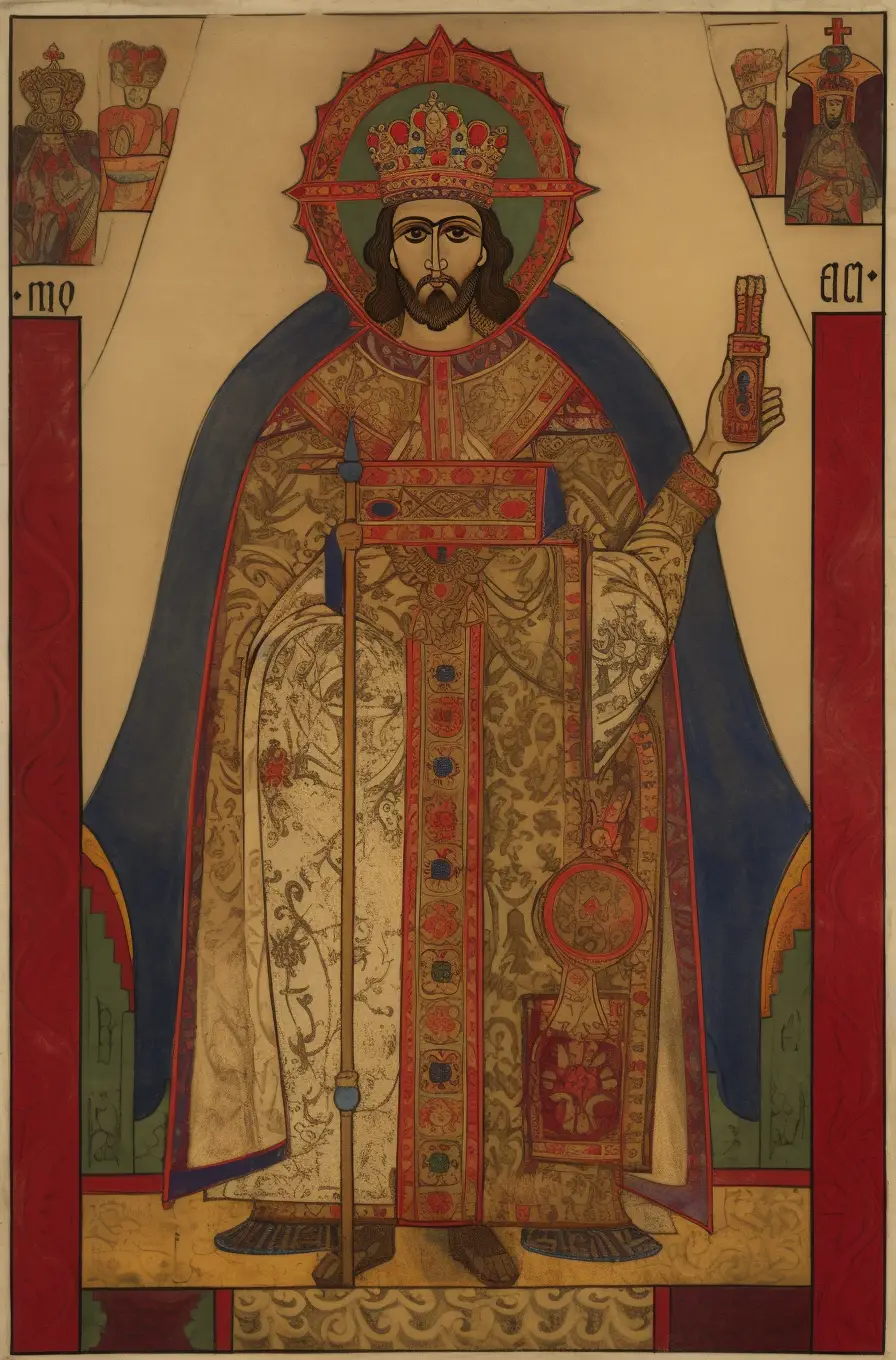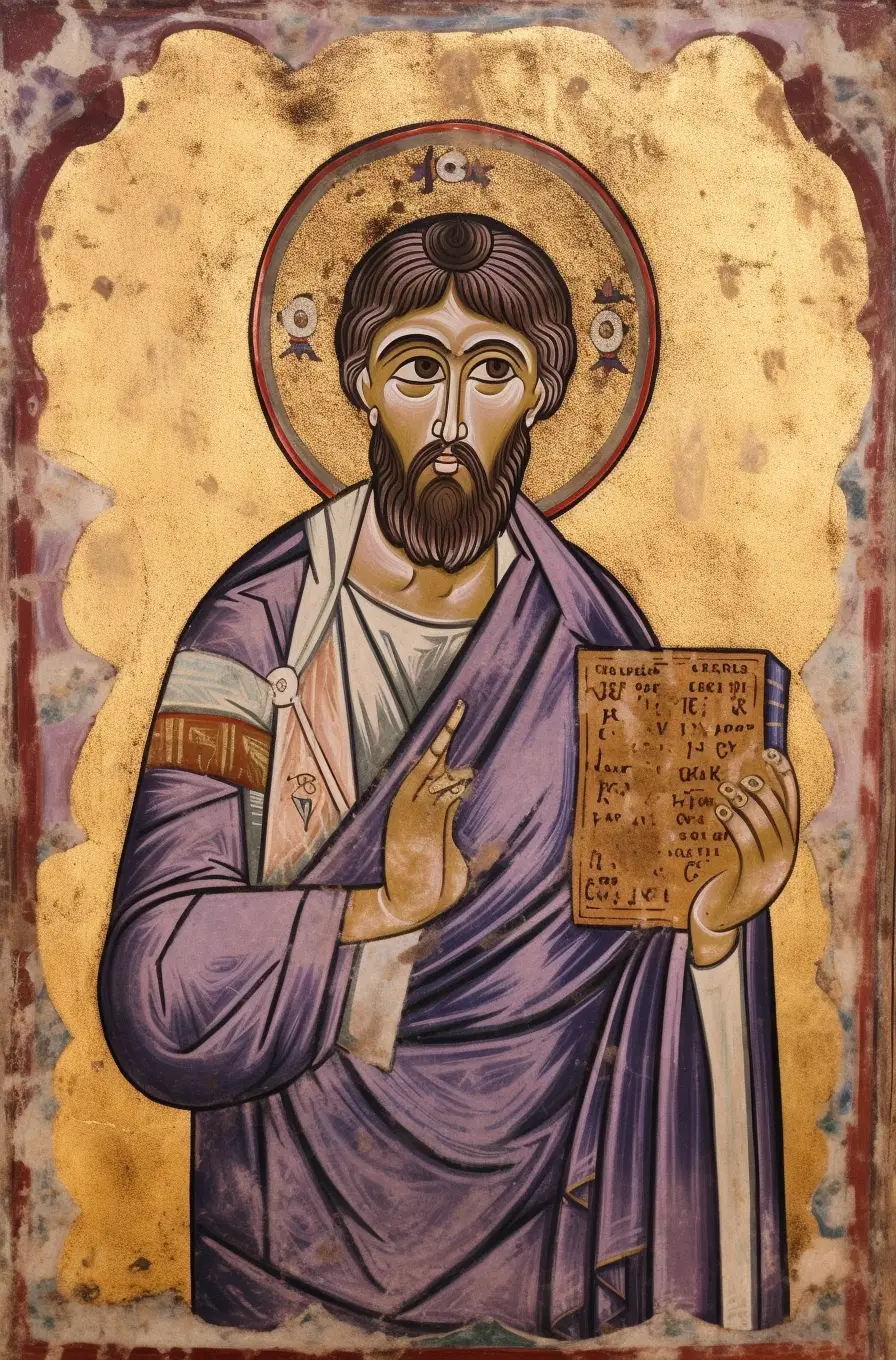Alexius Comnenos
Alexius Comnenos was a Byzantine emperor who ruled from 1081 to 1118. He is known for his successful military campaigns against the Normans and Seljuk Turks, as well as his efforts to reform the Byzantine government and economy. He also played a key role in the First Crusade, negotiating with the Crusaders and providing them with supplies and troops.
Alexius I or more commonly Alexius Comnenos was a Byzantine Emperor. He belonged to the Comnenos dynasty of Byzantine rulers. Alexius’ reign lasted from late 11th century to early 12th century. He is best known for turning a declining Byzantine Empire into a strong seat of power and successfully defending it against Norman invasions in Balkans and Seljuk Turk threat in Asia Minor.
While he was not the first Comnenian ruler, he is by far the most prominent one. His territorial, military and economic restoration of Byzantine Empire is known as the ‘Komnenian Restoration’.

Alexius Comnenos Facts for Kids
- Alexius Comnenos was Byzantine Emperor from 1081 to 1118.
- He founded the Comnenos dynasty.
- His reign marked the Comnenian Restoration.
- Alexius asked Pope Urban II for help against Seljuks.
- This request partly triggered the First Crusade.
- He fought against both Normans and Turks.
- Alexius introduced key military reforms.
- He strengthened Byzantine economy and administration.
- His daughter Anna wrote the “Alexiad” about him.
- He played a major role in shaping medieval Europe.
Byzantine Empire
Alexius Comnenos was the Byzantine Emperor from 1081 to 1118. His reign, known as the Comnenian Restoration, marked a period of revitalization for the Byzantine Empire. He introduced key military reforms, creating the formidable Komnenian army which helped regain territories.
Alexius faced threats from the Seljuk Turks and the Normans, yet he successfully preserved and strengthened the empire through astute governance and diplomacy. Notably, his appeal for help against the Turks to Pope Urban II was a catalyst for the First Crusade. His leadership had a profound impact on the Byzantine Empire and the broader Medieval era.
Early Life
Alexius was born into an aristocratic family in 1056. His father, John Comnenos was the brother of Byzantine Emperor Issac I. Alexius had four brothers and three sisters. His mother, Dalassene also belonged to a powerful clan and after his father’s death played an important role in Alexius’ accession.
After the abdication of Issac I, Johna Comnenos refused to ascend to the throne. As a result, four emperors from other families ruled till the accession of Alexius in 1081. Between 1068 and 1081, Alexius and his brother Issac served in the military campaigns in Thrace, Asia Minor, and Epirus.
The Comnenian Restoration
Alexius Comnenos initiated the Comnenian Restoration. This era reversed the Empire’s decline, thanks to his strategic vision and military reforms. He successfully recaptured territories from the Seljuk Turks and the Normans, strengthening Byzantine control. Under his leadership, the Empire experienced a resurgence in cultural and economic prosperity. Thus, Alexius’ reign laid a strong foundation for Byzantine resilience in the 12th century.
First Crusade
Alexius Comnenos played a key role in sparking the First Crusade. Faced with Seljuk Turk’s threats, he sought aid from Pope Urban II. His plea led to the Pope’s call for the First Crusade in 1095, aiming to reclaim the Holy Land. While Alexius sought military help against the Turks, his appeal ignited a series of campaigns that significantly shaped European and Middle Eastern history
Seljuk Turks
Alexius Comnenos’ rule was marked by strategic responses to threats from the Seljuk Turks, who were steadily encroaching on Byzantine territories. His call for Western help inadvertently sparked the First Crusade. Despite these challenges, he successfully contained and, in some instances, reversed territorial losses to the Turks. His skillful diplomacy and military tactics demonstrated effective leadership in a time of changing power dynamics.
Norman Conquest of Southern Italy
During Alexius Comnenos’ reign, the Normans conquered Southern Italy, posing threats to Byzantine territories. To counter these challenges, Alexius employed military and diplomatic tactics to limit Norman’s influence. He faced the Normans in several conflicts to preserve Byzantine control. Thus, he managed to maintain his empire’s territorial integrity during a period of Norman advancement.
The Alexiad
“The Alexiad,” written by Alexius Comnenos’ daughter, Anna Comnena, is a detailed chronicle of his rule. It provides insights into his strategic and military decisions, including significant events like the First Crusade and battles against the Normans and Seljuk Turks. Despite the potential bias, “The Alexiad” remains a valuable primary source for understanding Alexius Comnenos’ reign and the Byzantine Empire’s history.
Byzantine-Seljuk Wars
Alexius Comnenos’ leadership was crucial during the Byzantine-Seljuk Wars. These conflicts were primarily over control of Anatolia, a region of strategic importance. Alexius’ approach was multifaceted, combining military action with diplomacy. He sought aid from the west, leading to the First Crusade, a significant event in these wars. His successful defense against Seljuk advances and strategic counter-attacks played a key role in preventing further losses. Alexius’ actions during the Byzantine-Seljuk Wars helped to shape the geopolitical landscape of the region, demonstrating his strategic acumen in the face of substantial challenges.
Military Reforms of Alexius Comnenos
Alexius Comnenos’ military reforms were key to strengthening the Byzantine Empire. He established the ‘Komnenian army,’ a smaller, more professional, and versatile force. This improved army played a significant role in reclaiming territories and ensuring the empire’s stability. His comprehensive reforms also extended to the navy and fortifications, indicating a significant overhaul of Byzantine military capabilities during his time.

Byzantine-Norman Wars
During the Byzantine-Norman Wars, Alexius Comnenos employed military strategy and diplomacy to counter the Norman threat. As the Normans expanded into Southern Italy and the Balkans, he took steps to maintain Byzantine territories. His efforts in these conflicts demonstrate his commitment to preserving the Byzantine Empire. The Byzantine-Norman Wars under Alexius’ rule are a key part of Byzantine history.
Anna Dalassena
Alexius Comnenos’ mother, Anna Dalassena, was instrumental in his rise to power. A strong figure in the Comnenian dynasty, she managed affairs at home during Alexius’ military campaigns. Her wisdom and administrative skills were highly regarded. Her influence and support were key in establishing Alexius’ rule and consolidating the Comnenian dynasty’s power.
Anna Comnena
Anna Comnena, Alexius Comnenos’ daughter, wrote “The Alexiad,” a biography of her father’s rule. Her work provides insightful details about his governance, his strategic and military skills, and the political landscape of the time. Despite the potential familial bias, “The Alexiad” is a crucial historical resource for understanding Alexius Comnenos’ impact on the Byzantine Empire.
John Comnenus
John Comnenus, also known as John II, was the eldest son of Alexius Comnenos. As such, he was the heir apparent and succeeded his father on the Byzantine throne. John II continued his father’s policies of strengthening the Byzantine Empire, and his rule is often characterized by further consolidation of the gains made during Alexius’ reign.
Alexius Comnenos’ influence was clear in John’s military strategies, diplomatic maneuvers, and administrative reforms. Therefore, the succession of John Comnenus represented a continuity of the Comnenian restoration initiated by Alexius, marking a stable period in the history of the Byzantine Empire.
John Komnenos
John Komnenos, Alexius Comnenos’ elder brother, played a crucial role in his rule. Though he refused the throne, John served as Alexius’ key military adviser and led significant military campaigns. The strong bond between the brothers greatly influenced the Comnenian era, contributing to the stabilization of the Byzantine Empire during a turbulent period.
Alexius Assumes the Mantle
With the help of his mother, his wife’s powerful family, his brother Issac and Empress Maria, Alexius staged a coup against Emperor Nikephoros III. Empress Maria wanted her son from a previous marriage, Constantine to become the next emperor. Alexius and his mother Anna saw an opportunity to wrest the throne from Nikephoros III and joined hands with Maria. They assured her that they would support Constantine’s accession. After the coup, Alexius and Constantine assumed the mantle as co-rulers for some time before Alexius deposed Constantine and sent Maria to a monastery.
During Alexius’ thirty-seven years of rule, there was a severe struggle to survive repeated invasions by Normans and Turks. The first challenge he faced was from Norman military adventurer Robert Guiscard. Alexius was able to eventually defeat him after suffering several defeats himself. He subsequently turned towards Thrace, where revolt by Paulician and Pecheneg clans was hurting his cause. Here again, Alexius was able to quell the revolt.
He earned a decisive victory against Pechenegs at the Battle of Levounion in 1091. After pacifying the Balkans, Alexius focused his attention on Asia Minor, where Seljuk Turks had invaded vast tracts of land. He sought help from Pope Urban II, who obliged him by preaching the First Crusade. After some early setbacks, The First Crusade was successful in recovering various cities from the Turks. As a result, Byzantine forces retook much of western Asia Minor.
Personal Life
Alexius is credited by historians for saving Byzantine Empire from an existential threat at the time of his accession. He ably commanded his forces to fend off serious threats from Turks and Normans. His superior political ability enabled him to forge alliances at critical times which served him well. His rule, however; grew unpopular as time went by. The main reason was his religious persecution of the Paulician and Bogomil sects. He was nevertheless credited for bringing much-needed monetary reforms.
He introduced ‘Hyperpyron’, the new coinage which stabilized the financial situation of his empire. He was always under the influence of her mother Anna. Such was her clout that upon Alexius’ accession to the throne, she assumed the title of ‘Augusta’ which actually belonged to Alexius’ wife Irene Doukaina. After a protracted illness, Alexius died on August 16, 1118. He was succeeded by his son John II Comnenus. John II was groomed well for the role and proved to be an able and admirable ruler.



